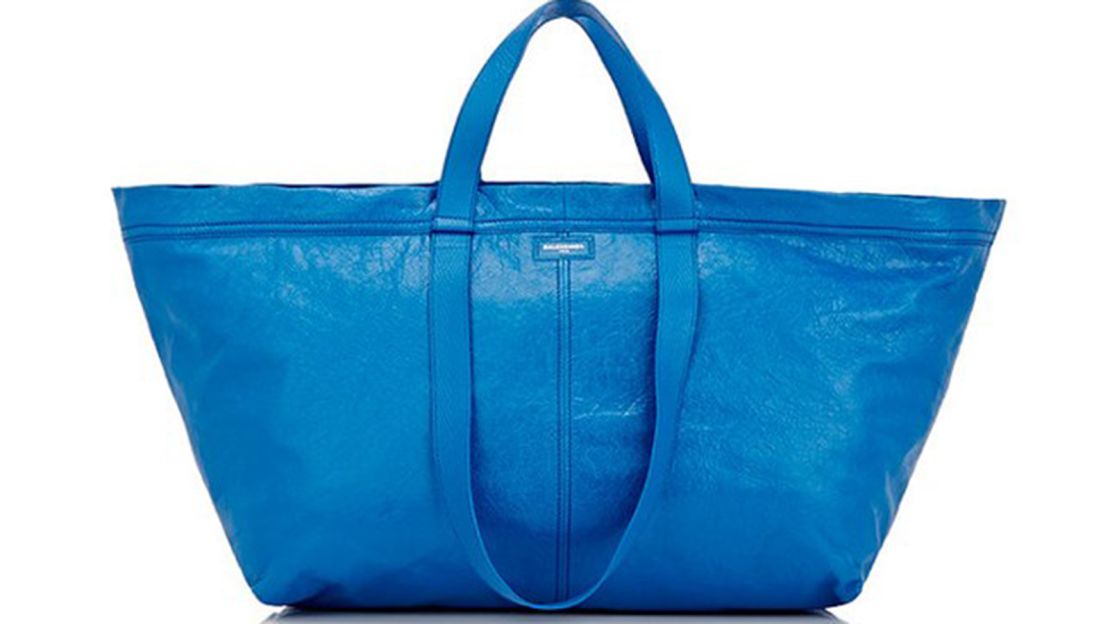The story of Balenciaga’s Ikea-inspired blue tote (priced at $2,145) continues to make its way around the Internet this week, having been revived by a playful new response from the Swedish furniture brand. But for all the social media commentary, it’s important to remember this story isn’t new.

Fashion houses, artists and designers have often looked to everyday objects for inspiration. From Andy Warhol’s “Campbell’s Soup Cans” (1962) to Anya Hindmarch’s Crisp Packet Clutch or Moschino’s spray detergent cell phone covers, there are plenty of examples.
In 2007, Louis Vuitton took the extremely ordinary checked laundry bag, a favorite among cash-strapped students, and available for a dollar or two at most, and turned it into a couture product.
In 2014, London-based designer Ashish Gupta revamped the plastic grocery bag into a sequined statement piece – at a premium price.

Gupta commented in an email: “It’s a homage to everyday life and classic design, but also perhaps a revolt against the disposable nature of fast fashion – it’s taking a classic but throw-away object and turning it into something with longevity, that can be appreciated outside of its usual context for its timeless design quality.”
For Hindmarch, it was a case of saluting everyday, yet unsung designs: “There are some really cleverly designed products out there that don’t get the respect they are due. The crisp (chips are known as crisps in the UK) packet for example is a lovely thing. It is functional, fluid, beautiful and soft. It stacks well, and protects the product,” she said of the design that inspired her Crisp Packet Clutch.

“A crisp packet is a proper industrial design, like the Ikea bag. Listen, the Ikea bag is a great bag. How often do you see people walking around and re-using this bag? All the time! They are everywhere. It is a productive and useful design, and actually most everyday items are solidly designed … and why shouldn’t that be honored?”
Like Balenciaga, Hindmarch’s bags are not cheap, but as she explained over the phone: “People don’t mind paying for quality because, frankly, with all the hand tooling and crafting involved, they are absolutely worthy of the prices.”
The designer said that some of these pieces can be viewed as art (indeed, some of her bags have landed in the Victoria and Albert Museum – the same institution in London where a major Balenciaga retrospective will open next month).
She was also quick to acknowledge that fashion can be fun. “People are bored of fashion that is just about money, status or the next hot designer. These kind of products are a little rebellious, and a lot of fun,” concluded Hindmarch.
Ikea certainly saw the funny side of things when it tweeted out guidance on how to identify an authentic Frakta Ikea bag. The irony of a luxury house being playfully called out on authenticity by Ikea, a company that sells banal products in bulk at budget prices, was not lost on anyone.
According to Ikea, the sure way to tell a Frakta is authentic is by “throwing it in dirt – as it simply rinses off with a garden hose when dirty.”
It’s unlikely that many will take that risk…






